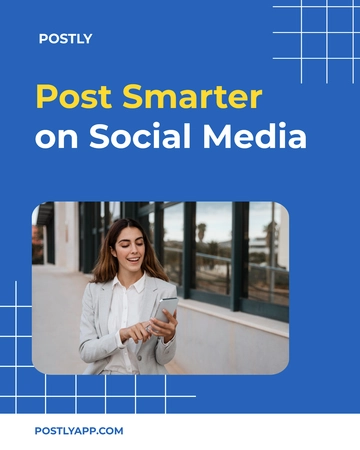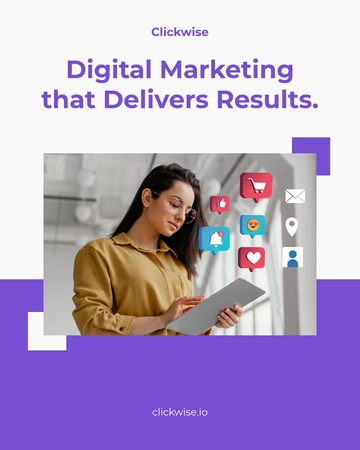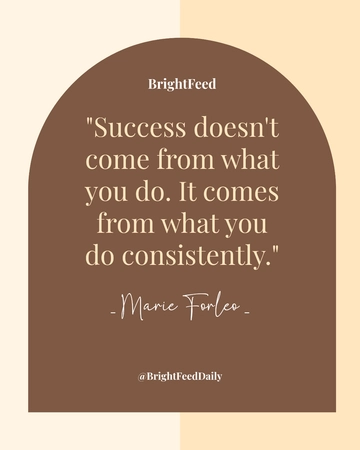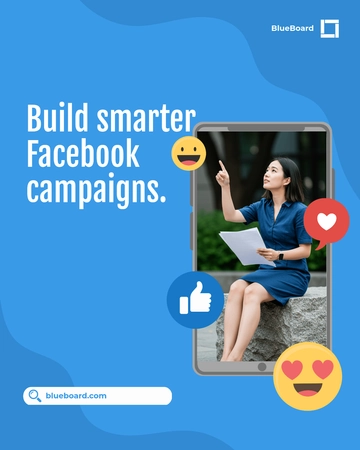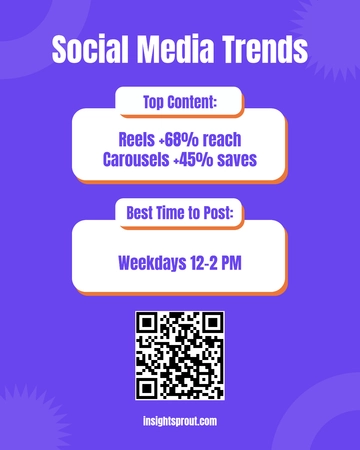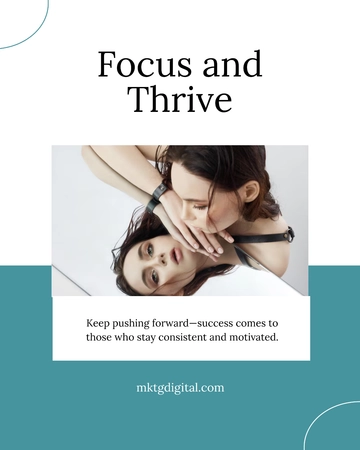Free Media Social Strategy
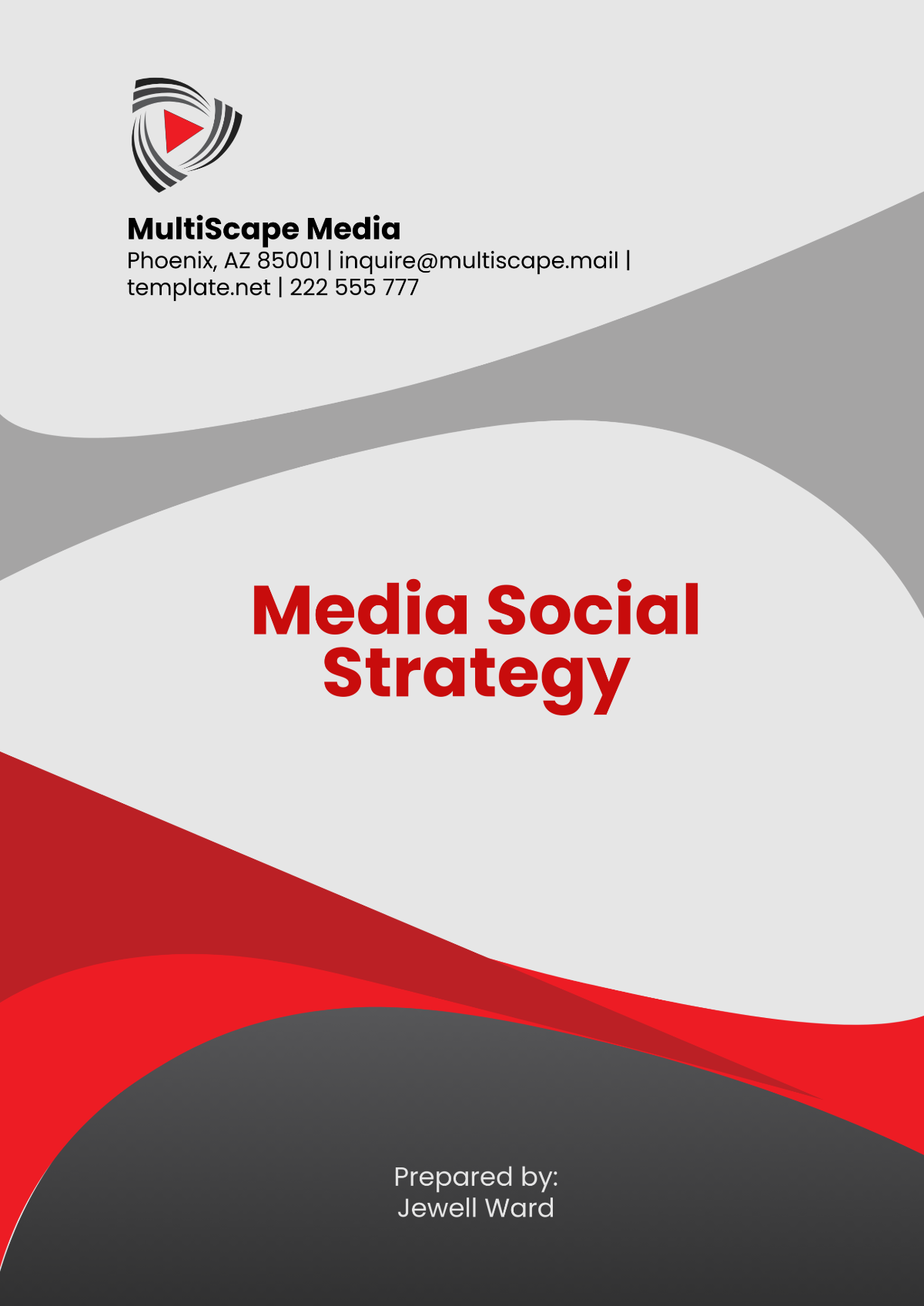
I. Introduction
Social media has solidified its role as one of the most effective tools for businesses to reach their target audiences, build brand awareness, and foster direct engagement with customers. The rapid evolution of platforms, trends, and user behavior requires businesses to continuously adapt and optimize their social media strategies. For [Your Company Name], crafting a comprehensive, forward-thinking social media strategy is not just an option, but a necessity for achieving sustainable growth, increasing visibility, and maximizing return on investment. A well-defined media social strategy will empower [Your Company Name] to engage meaningfully with customers, drive sales, and stay ahead of industry competitors. This document outlines a detailed framework for building and executing a robust social media strategy that aligns with the company’s goals and vision for 2050 and beyond.
The strategy spans all phases of social media engagement, from the initial planning stages to post-campaign analysis, and includes key performance indicators (KPIs) to ensure measurable success. This guide will also provide insight into the tools, resources, and processes necessary to implement the plan, as well as address potential challenges and ways to mitigate them.
II. Objectives of Social Media Strategy
A. Primary Objectives
To set the stage for a successful social media strategy, we must first outline the core objectives that will guide all efforts. These objectives ensure that the strategy remains focused, relevant, and results-oriented, helping [Your Company Name] stay aligned with its long-term business goals.
Increase Brand Awareness
One of the fundamental objectives of the social media strategy is to raise awareness of [Your Company Name]'s brand. In an increasingly crowded market, building recognition is essential for standing out. By 2055, [Your Company Name] aims to grow its social media following by [50%], positioning itself as a leading voice within the industry. Increased brand awareness will make it easier for potential customers to find the brand, engage with its content, and ultimately make purchasing decisions.Drive Website Traffic
Social media platforms are powerful tools for driving traffic to company websites, where users can learn more about products, services, and special offers. As part of our strategy, we aim for social media to contribute to [30%] of overall website visits by [2053]. This will involve creating highly engaging posts that encourage users to visit the website for further information, promotions, and conversions.Boost Customer Engagement
In the digital age, it’s no longer enough to simply push promotional content to followers. Engagement is key to fostering long-term relationships with customers. By implementing more interactive content such as polls, surveys, and live Q&A sessions, [Your Company Name] plans to increase customer engagement rates by [25%] by [2055]. The goal is to make followers feel like active participants in the brand’s journey, encouraging them to comment, share, and advocate for the company.Generate Leads and Sales
Social media is a direct channel to generate leads and ultimately convert them into customers. By [2055], [Your Company Name] aims to have social media contribute to [40%] of the total leads generated, with [15%] of those leads converting into paying customers. This will be achieved through strategically placed calls to action (CTAs), promotional posts, and targeted advertising campaigns that direct users to landing pages optimized for conversions.Build Thought Leadership
Establishing [Your Company Name] as a trusted thought leader in its industry is another key objective. By [2055], we aim to increase content shares, mentions, and references by [35%] through the consistent sharing of valuable insights, research, and expert opinions. This helps build credibility and establishes the company as a go-to source of knowledge in the field, driving long-term loyalty and trust from both current and potential customers.
III. Target Audience
A. Audience Segments
Understanding the target audience is essential for crafting content that resonates with potential customers and inspires them to take action. The following segments define the key demographics and psychographics of [Your Company Name]'s ideal audience.
Demographic Analysis
Age Group: Our primary audience consists of individuals between 25-45 years old, who are typically in their career-building or mid-career stage. This group is tech-savvy, highly engaged with digital content, and often makes purchasing decisions based on online reviews, social media influence, and personalized recommendations.
Gender: Our social media content will cater equally to both male and female audiences, with content tailored to suit the diverse needs of each. We aim for a balanced reach of [50% female, 50% male] engagement across all platforms.
Location: Although our business has a global reach, we are focusing primarily on the North American, European, and Asian markets. These regions have high internet penetration, strong social media usage, and a substantial demand for the products and services we offer.
Income Level: Our audience tends to fall within the middle to high-income bracket, with annual earnings ranging from [$50,000 to $200,000]. These individuals have the purchasing power to invest in quality products and services.
Psychographic Analysis
Interests: Our target audience is interested in technology, innovation, sustainability, and entrepreneurship. Many are early adopters of new technologies and appreciate businesses that align with their values, particularly those focused on sustainability and social responsibility.
Behavior Trends: The modern consumer often favors visual content, particularly video and images, over text-based posts. They are also more likely to engage with brands that provide content that adds value to their lives, whether through entertainment, education, or product demonstrations.
Social Media Preferences
Instagram: Known for its visually appealing content, Instagram is ideal for showcasing products, services, and behind-the-scenes content.
LinkedIn: As a platform for professionals, LinkedIn is best suited for thought leadership, business announcements, and networking.
TikTok: With its short-form, fast-paced videos, TikTok is great for reaching a younger demographic and showcasing fun, engaging content.
YouTube: Long-form content such as tutorials, product reviews, and educational videos performs well on YouTube, providing an excellent opportunity for deeper engagement.
IV. Platform-Specific Strategy
Each social media platform has unique characteristics, which require a tailored approach for maximum effectiveness. The following platform-specific strategies outline how we will engage audiences across Instagram, LinkedIn, TikTok, and YouTube.
A. Instagram
Content Type
Instagram is a highly visual platform, and content will primarily consist of high-quality images and videos. The focus will be on showcasing products in lifestyle contexts, customer testimonials, and user-generated content (UGC). Reels will be utilized for quick, entertaining content, such as product unboxing or behind-the-scenes looks at the company. Stories will provide real-time engagement, including limited-time offers, polls, and interactive Q&A sessions.Posting Frequency
We aim for consistency, posting at least [5] times per week to keep our audience engaged without overwhelming them. This frequency ensures that we maintain top-of-mind awareness while also allowing time to optimize content performance based on data insights.Key Metrics
Our target engagement rate for Instagram is [10%], with an overall goal of reaching [100,000] impressions per month. We will closely monitor likes, shares, comments, and saves to assess the effectiveness of our content.
B. LinkedIn
Content Type
LinkedIn is a professional networking platform, and as such, our content will focus on thought leadership, industry news, and company achievements. Posts will include articles, whitepapers, case studies, and updates about new products or services. Employee spotlights will also be shared to showcase company culture and expertise.Posting Frequency
Our goal is to post on LinkedIn at least [3] times per week. This frequency strikes a balance between sharing valuable content and maintaining consistent visibility in users' feeds.Key Metrics
We aim to increase our LinkedIn network by [40%] in the next two years and to boost post engagement by [20%] by [2054]. This will be tracked through metrics such as post likes, comments, shares, and connection requests.
C. TikTok
Content Type
TikTok is ideal for fun, short-form content that entertains and engages users. We will create a mix of content, including product demos, quick tips, trends, and collaborations with influencers. The platform’s interactive features, such as duets and challenges, will be leveraged to encourage user participation and virality.Posting Frequency
The goal is to post at least [7 times per week] to maintain visibility on TikTok’s fast-moving feed. This will ensure we stay engaged with our audience and take advantage of trending content opportunities.Key Metrics
Our goal is to reach [50,000] followers by [2053] and generate [10,000] interactions per month. These metrics will be tracked through likes, comments, shares, and the number of users participating in branded challenges or trends.
D. YouTube
Content Type
YouTube allows for longer, more in-depth content. Our strategy will include educational videos, product demonstrations, behind-the-scenes looks, and webinars. We will create a content series around topics relevant to our audience, establishing [Your Company Name] as a thought leader in the industry.Posting Frequency
Given the time investment required for YouTube videos, we plan to post at least [2 times per month]. This frequency allows for higher production value and ensures content remains relevant and informative.Key Metrics
Our goal for YouTube is to grow our subscriber base to [30,000] by [2054] and achieve [100,000] views per quarter. We will also track engagement metrics such as comments, likes, shares, and watch time to assess how well content resonates with viewers.
V. Content Strategy
The content strategy is a critical component of the overall social media approach. Without engaging, high-quality content, social media efforts will fall short of expectations. Our content strategy will focus on a blend of educational, engagement-driven, promotional, and entertaining content that appeals to our target audience.
A. Types of Content
Educational Content
This type of content is designed to inform and provide value to the audience. It includes blog posts, articles, how-to videos, and infographics that help users solve problems or learn something new. Educational content will establish [Your Company Name] as an authority in the industry and build trust with the audience.Engagement Content
Engagement content includes polls, surveys, and interactive posts that encourage users to participate in discussions, provide feedback, and share opinions. User-generated content (UGC) will also be a major component, as this type of content fosters a sense of community and encourages users to feel personally connected to the brand.Promotional Content
Promotional content highlights specific products, services, discounts, or special offers. It includes calls to action (CTAs) that drive traffic to landing pages or encourage followers to make purchases. Promotions will be time-sensitive to create urgency and incentivize immediate action from followers.Entertaining Content
Entertaining content, such as memes, GIFs, or fun behind-the-scenes moments, will humanize the brand and provide followers with content they can relate to. This type of content aims to spark laughter or emotional responses, making it more likely to be shared among users.
VI. Implementation Plan
The successful execution of a social media strategy requires careful planning, coordination, and the right tools and resources. For [Your Company Name], this section outlines the resources, processes, and timeline necessary to bring the social media strategy to life. It also includes the key steps and strategies to ensure smooth execution across all channels.
A. Resources and Tools
Team Roles
For the implementation of a social media strategy to be successful, it requires a dedicated team to handle various tasks. At [Your Company Name], our social media strategy will require the following roles:Social Media Manager: The social media manager will be responsible for overseeing the implementation of the strategy. This includes creating the content calendar, ensuring that posts are published on time, managing paid media campaigns, and working with the analytics team to track performance. The social media manager will also maintain consistent messaging across all platforms to ensure that the brand voice is unified.
Content Creators: Content creators will be responsible for developing all the visual and written content for social media. This includes graphic designers, copywriters, video producers, and photographers. They will work closely with the social media manager to ensure that content aligns with the overall strategy, resonates with the target audience, and adheres to the brand’s standards. As content is key to engagement, a high level of creativity and skill is essential.
Community Manager: The community manager plays a vital role in engaging with the audience. They monitor social media accounts for comments, questions, messages, and mentions, ensuring timely responses. Engaging with followers, addressing customer concerns, and fostering conversations will help maintain positive relationships between the brand and its followers.
Data Analyst: The data analyst will track social media metrics, analyze the results, and provide insights into how the strategy can be improved. Using analytics tools like Google Analytics, Sprout Social, and platform-specific data, they will measure key performance indicators (KPIs) such as engagement rates, conversions, and audience growth, and suggest adjustments to optimize the strategy.
Tools
To efficiently manage, schedule, and measure the success of social media activities, the following tools will be used by the team:Content Creation Tools: Canva, Adobe Photoshop, Adobe Premiere, and Final Cut Pro will be used for creating graphics, videos, and other media content. These tools allow for the creation of high-quality visuals that match the brand's aesthetic, which is crucial for engaging and retaining followers.
Social Media Scheduling Tools: Platforms like Hootsuite, Buffer, and Sprinklr will be used for scheduling posts in advance, helping to maintain consistency across platforms. These tools also provide insights into the best times to post and manage multiple accounts in one interface.
Social Media Analytics Tools: Tools such as Sprout Social, Google Analytics, and the native analytics platforms of social media channels will be used to track metrics, measure performance, and gain insights into user behavior. Monitoring KPIs such as engagement, reach, impressions, and conversions will help the team assess which content is working and identify areas for improvement.
Paid Advertising Tools: Platforms like Facebook Ads Manager, LinkedIn Campaign Manager, and Google Ads will be used to manage paid media campaigns across various channels. These tools allow for precise targeting, budget management, and ad performance tracking, helping to ensure maximum ROI on ad spend.
B. Timeline
The successful execution of this strategy will follow a structured timeline that aligns with the company’s broader business goals. It is important to have clear milestones to measure progress and ensure the strategy stays on track. Below is a proposed timeline:
Milestone | Date | Goal |
|---|---|---|
Strategy Launch | January 2051 | Activate content across all platforms. Initiate the first round of paid campaigns. |
First Campaign Analysis | March 2051 | Evaluate the first quarter’s results to refine the strategy. |
Audience Expansion | June 2052 | Increase followers by [20%] across all platforms. |
Refinement & Optimization | September 2052 | Fine-tune content strategies based on analytics, optimizing for engagement and conversions. |
Major Campaign Launch | December 2053 | Launch a large-scale, cross-platform promotional campaign. |
Comprehensive Review | March 2054 | Analyze the strategy’s overall performance and determine areas for improvement. |
The timeline should remain flexible to accommodate changes in trends, audience behavior, and business goals. Each milestone should be accompanied by a review process to ensure that lessons are learned, and adjustments are made based on performance data.
VII. Measurement and KPIs
To ensure that the social media strategy is meeting its objectives, performance metrics must be closely monitored. This section outlines the key performance indicators (KPIs) that will be used to measure the success of the strategy and how they will be tracked.
A. Key Performance Indicators (KPIs)
Engagement Metrics
Engagement is one of the most important indicators of success on social media. Engagement metrics include likes, shares, comments, retweets, and saves. These metrics provide insight into how well the audience is responding to the content. High engagement rates generally indicate that the content is resonating with the target audience.KPIs for Engagement Metrics:
Target engagement rate of [10%] by [2053].
[50,000] interactions (likes, shares, comments) per month across platforms.
Increase in the number of comments on posts by [30%] over the next year.
Conversion Metrics
Conversion metrics track how effectively social media activities drive desired outcomes, such as website visits, sign-ups, downloads, or product purchases. These metrics directly measure the ROI of social media campaigns.KPIs for Conversion Metrics:
Increase social media-driven website traffic by [30%] by [2053].
Achieve a conversion rate of [5%] from social media leads to paying customers.
Increase email newsletter sign-ups via social media by [25%].
Reach and Impressions
Reach measures how many unique individuals see the content, while impressions indicate how many times the content is displayed, regardless of whether it was clicked or interacted with. Both metrics are critical for understanding how widely the brand is being exposed and how effective the content distribution is.KPIs for Reach and Impressions:
Target reach of [500,000] unique users per month by [2054].
Achieve [1,000,000] impressions per month across all platforms.
Increase brand mentions by [40%] by [2055].
Audience Growth
Audience growth measures the increase in followers or subscribers across social media platforms. Consistent growth in followers demonstrates that the content is attracting new people and that the brand is successfully expanding its online community.KPIs for Audience Growth:
Increase overall followers by [50%] by [2055].
Gain [5,000] new followers on Instagram and [2,000] on LinkedIn each month.
Reach a total of [100,000] followers across all platforms by [2054].
B. Key Metrics
To track performance, key metrics should be monitored on a monthly basis. Below is a sample of how the data can be tracked to evaluate progress:
Month | Engagement Rate (%) | Followers | Website Traffic from Social Media (%) | Leads Generated |
|---|---|---|---|---|
January 2051 | 5 | 10,000 | 12 | 50 |
March 2051 | 7 | 12,000 | 15 | 75 |
June 2051 | 10 | 15,000 | 20 | 100 |
September 2051 | 12 | 20,000 | 25 | 120 |
December 2051 | 15 | 25,000 | 30 | 150 |
By tracking these KPIs and comparing them to the set goals, [Your Company Name] can continually optimize its approach, ensuring that the strategy evolves in line with audience behavior and platform changes.
VIII. Budget Allocation
An effective social media strategy requires careful financial planning to ensure that resources are used wisely and deliver maximum ROI. This section provides a breakdown of the estimated costs involved in executing the social media strategy for [Your Company Name].
A. Estimated Costs
A budget will be allocated to various components of the strategy, including content creation, paid advertising, influencer marketing, and social media management tools. Below is an estimated breakdown:
Category | Monthly Cost ($) | Annual Cost ($) |
|---|---|---|
Content Creation | 2,000 | 24,000 |
Paid Ads | 5,000 | 60,000 |
Influencer Marketing | 3,000 | 36,000 |
Social Media Tools | 1,000 | 12,000 |
Community Management | 2,000 | 24,000 |
Total | 13,000 | 156,000 |
Each of these categories plays a crucial role in executing the strategy. Content creation costs will include the development of visual and written materials, while paid advertising costs will help increase reach and drive targeted traffic. Influencer marketing is expected to provide significant visibility and engagement, and community management costs ensure that audience interactions are handled in a timely and professional manner.
B. ROI Projections
In terms of ROI, for every [$1] spent, we anticipate a return of [$3] based on conversion rates from social media-driven leads. This projection is based on our expected increase in sales from growing engagement, improving conversion rates, and the ongoing success of paid media campaigns.
IX. Challenges and Mitigation Strategies
Even with a solid strategy, there are always challenges that can arise. Understanding potential obstacles and having strategies in place to mitigate them is essential to ensure success in the long term.
A. Common Challenges
Algorithm Changes
Social media algorithms are constantly evolving, which can affect the visibility of organic content. Platforms like Facebook and Instagram frequently change their algorithms, making it harder for businesses to reach their audience without paid promotion.Mitigation Strategy: Stay informed about changes in algorithms and be agile enough to adapt the content strategy. Regularly test different types of content and posting schedules to identify what works best. Additionally, investing in paid media can help offset organic reach losses due to algorithm changes.
Content Saturation
The social media space is becoming increasingly crowded as more brands enter the scene. This saturation can make it more difficult to capture the audience’s attention and generate meaningful engagement.Mitigation Strategy: Focus on creating highly original and interactive content that stands out from the competition. Diversifying content formats and incorporating unique storytelling techniques can help engage users and maintain their interest. Regularly engage with followers through polls, Q&A sessions, and live broadcasts to maintain an active community.
Crisis Management
Occasionally, social media crises arise, whether from negative comments, PR issues, or a brand misstep. These can quickly escalate and damage the company’s reputation.Mitigation Strategy: Develop a crisis communication plan that includes pre-determined responses, guidelines for handling negative feedback, and steps to resolve issues swiftly. Engaging with followers empathetically and taking responsibility for mistakes can help mitigate any damage.
X. Conclusion
The social media strategy for [Your Company Name] is designed to achieve long-term success by engaging with a growing audience, driving conversions, and optimizing the user experience. By utilizing the resources, tools, and team structure outlined in this plan, [Your Company Name] can effectively execute its strategy, measure its success, and adjust its approach to stay aligned with industry trends and audience needs.
By consistently analyzing performance data, optimizing content, and staying agile in the face of challenges, the company will continue to build a strong social media presence and achieve sustained business growth.
- 100% Customizable, free editor
- Access 1 Million+ Templates, photo’s & graphics
- Download or share as a template
- Click and replace photos, graphics, text, backgrounds
- Resize, crop, AI write & more
- Access advanced editor
Craft winning social campaigns with the Media Social Strategy Template from Template.net. This editable and customizable template helps you strategize effectively for audience engagement. Personalize your strategy with the AI Editor Tool for maximum impact.
You may also like
- Instagram Ad
- Instagram Banner
- Instagram Frame
- Instagram Post
- Instagram Profile Picture
- Instagram Story
- Instagram Story Highlights
- Twitter Ad
- Twitter Header
- Twitter Post
- LinkedIn Photo
- Linkedin Post
- YouTube
- Youtube Ad
- Youtube Banner
- YouTube Channel Art
- YouTube End Screen
- Youtube Profile Photo
- YouTube Thumbnail
- Facebook Ad
- Facebook Cover
- Facebook Post
- Facebook Profile Frame
- Facebook Profile Photo
- Twitch Offline Banner
- Linkedin Banner
- Twitch Overlay
- Whatsapp Status
- Reddit Banner
- Social Media Banner
- Social Media Clipart
- Social Media Plan
- Social Media Contract
- Social Media Planner
- Social Media Report
- Social Media Agreement
- Social Media Business Card
- Social Media Proposal
- Social Media Presentation
